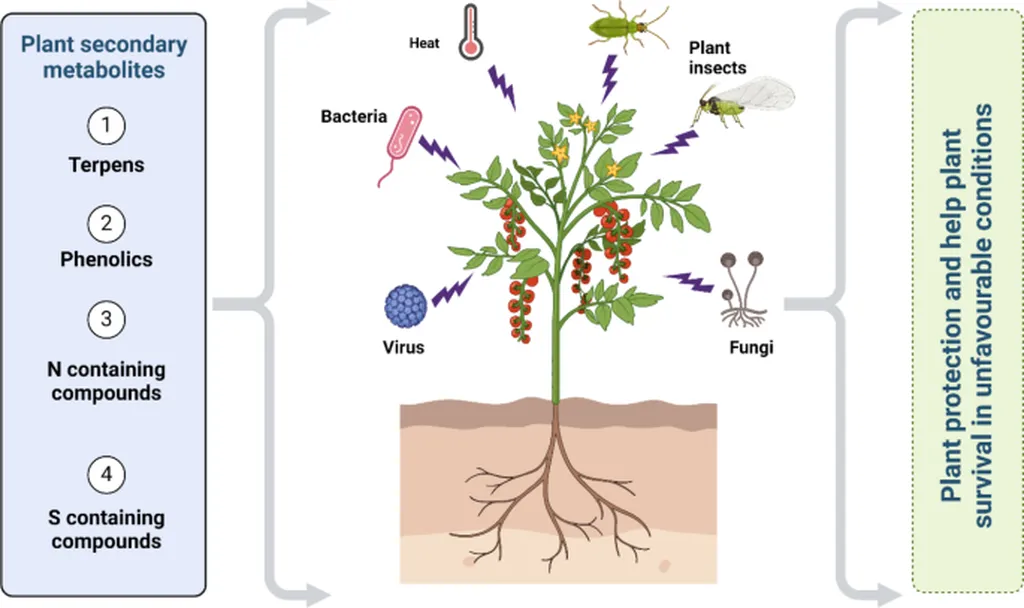In a groundbreaking study published in *Scientia Horticulturae*, researchers have uncovered the potential of cold plasma technology to revolutionize the cultivation of Anoectochilus formosanus, a medicinal orchid known for its bioactive compounds. The study, led by Kanoktip Pansuksan from the Division of Traditional Chinese Medicine at Chulabhorn International College of Medicine, Thammasat University, Thailand, explores how cold atmospheric plasma jet (CPJ) treatment can enhance the growth, phytochemical profile, and antibacterial properties of this valuable plant.
The research focused on the effects of CPJ treatment with varying exposure times (30–120 seconds) on the physiological characteristics, bioactive compounds, antioxidant capacity, and antibacterial activity of A. formosanus cultured in vitro over six weeks. The findings are nothing short of remarkable. “CPJ treatment for 60 seconds produced the greatest improvements in plant growth, with plant height, fresh weight, and dry weight increasing by 57.87, 195, and 263%, respectively, compared with the control,” Pansuksan explained. These enhancements were attributed to multiple physiological and biochemical changes, including elevated chlorophyll and carotenoid contents, enhanced activities of antioxidant enzymes, and reduced membrane lipid peroxidation.
The study also revealed that CPJ treatment altered the phytochemical profile of A. formosanus. Specifically, the levels of isorhamnetin and kinsenoside increased 1.27- and 2.46-fold after 120 seconds and 60 seconds exposures, respectively. These compounds are known for their medicinal properties, making this discovery particularly significant for the pharmaceutical and agricultural sectors.
Moreover, the antioxidant capacity of the plants was significantly boosted. The total phenolic, flavonoid, DPPH radical scavenging, and FRAP assays were increased by 22.53, 7.40, 22.65, and 81.10%, respectively. This suggests that CPJ-treated A. formosanus could be a valuable source of natural antioxidants, which are in high demand in the food and cosmetic industries.
The antibacterial properties of the CPJ-treated extracts were also noteworthy. The extracts inhibited the growth of Candida albicans, Escherichia coli, and Staphylococcus aureus, with maximum inhibition of 37.55% against S. aureus at 313 µg/mL after 30 seconds treatment. While the antimicrobial effects were strongest in the early weeks, they diminished over time, indicating the need for further research to optimize treatment protocols.
The commercial implications of this research are vast. For the agriculture sector, cold plasma technology offers a non-thermal, environmentally friendly method to enhance plant growth and bioactive compound production. This could lead to more efficient and sustainable cultivation practices, reducing the need for chemical fertilizers and pesticides. Additionally, the enhanced phytochemical profiles and antioxidant capacities of CPJ-treated plants could open new avenues for the development of high-value medicinal and nutritional products.
As Kanoktip Pansuksan noted, “Cold plasma technology is a promising method for improving growth, phytochemical profile, antioxidant defense, and antibacterial activity in A. formosanus in vitro culture.” This research not only highlights the potential of cold plasma technology but also paves the way for future studies to explore its applications in other plant species and agricultural practices.
In conclusion, this study published in *Scientia Horticulturae* by Kanoktip Pansuksan and her team at Chulabhorn International College of Medicine, Thammasat University, Thailand, offers a glimpse into the future of plant cultivation and bioactive compound production. By harnessing the power of cold plasma technology, the agriculture sector can look forward to more sustainable and efficient practices, ultimately benefiting both producers and consumers alike.

